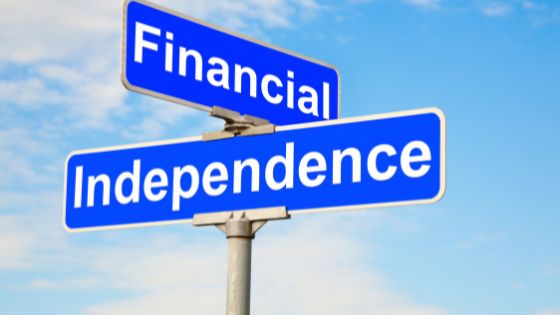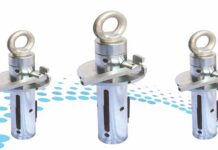You must have heard of the FIRE movement from many people who have successfully managed to aggressively stash away money to support their lifestyle without bringing in a salary. A lot of financial books and magazines are out there talking about this movement that aims at retiring earlier than the standard retirement age, generally at the age of 30 or 40. FIRE consists of two components: financial independence and retiring early.
It involves saving and investing money aggressively when you are working so you have enough wealth to get by for the rest of your life after you retire in your 30s or 40s. To start this process, you need to understand the total annual expenses to be multiplied by 25.


Once you have stowed away that amount by investing in equities, you can easily live off those proceeds for up to 30 years. You will withdraw each year 4% of that capital to meet all of your expenses after retirement.
Apart from investing in equities, you can also invest that money in real estate and grab a side hustle that allows for enough cash to cover your monthly expenses. Every person has their own reasons for implementing the FIRE movement. It is not just about early retirement. Some people continue to work even after it, while others implement it to take a sabbatical.
Types of FIRE
Implementing a FIRE movement is not as easy as it seems. It is not just doing simple calculations, and you are all set to go. There is a lot more to it that you must know.
Fat FIRE
This approach is used only by high-income professionals who do not have to worry about budget limitations. It is the opposite of lean FIRE, where you just save 25 times of your current spending and try to spend less than every year after accumulating that much wealth.
As opposed to lean FIRE, Fat FIRE is a stage where you have reached your financial independence and spend more money than the average spender. Therefore, this strategy is applicable for those who are earning a very high income, for instance, $100,000. This approach can be enjoyed by those who are not penny-pinches and want to enjoy the life of Riley.
Barista FI
This approach targets those people who have attained financial independence yet need a part-time job to cover some of their expenses, including health insurance. For some people, health insurance can be a significant expense, and it may be quite challenging to cover within 4% of the total savings you have created.
CoastFI
This is a movement that allows you to save for 30 to 40 years of your life within 10 to 20 years and then invest that money to grow your wealth until you reach the standard retirement age. These target those people who have attained financial independence yet want to continue to work.
SlowFI
It involves a longer path to achieve financial independence. Contrary to other streams of FIRE, you focus on enjoying your life as well when you are working instead of making big sacrifices.
Tips for making the FIRE movement successful
As long as you are not following slow FI movement, you will have to take the necessary steps:
Lower your expenses
Retiring early means having sufficient wealth to live off for the rest of your life after you leave your job, and this could be possible when you start cutting back on your expenses. Even if you follow the fat FIRE movement, you will have to make certain sacrifices.
Evaluate your annual expenses and find out the areas for cutting down. You may have to live off a lean budget that has the scope for meeting only essential expenses.
If you plan to retire early, you may have to avoid travelling, eating out, and hanging out with friends. All your transactions will be cash. You can track them smoothly. Avoid using credit cards so you do not make unnecessary purchases and end up taking out installment loans with no credit check from direct lenders only to clear dues.
Try to live a debt-free life
You cannot retire early if you are living under a debt burden. Before you start laying aside money, you should settle your outstanding debts. Make a debt repayment strategy so you can avoid accruing interest over time. The sooner you settle your debt, the better it is.
Once you have cleared all your obligations, you can start saving and investing money aggressively. Since emergencies can crop up at any time, you will dip into your savings to meet that expense instead of taking out emergency rent loans for bad credit.
Try to automate your savings, so there are no chances of slipping them through the cracks. You can increase your contribution if you have a 401(K account).
Increase your income
While it is vital to lower your expenses, increasing your income is imperative. It seems very easy to save 25 times your current spending, but it is actually a herculean task.
You cannot gain financial independence and retire early unless you increase your income sources. It can include asking for a pay hike, getting a side gig, or switching the industry.
Talk to a financial planner
Deciding on early retirement is a very big decision. You cannot just decide it impetuously. Even though you are able to whittle down your expenses or increase your income sources, you need foresightedness. After retiring early, you are supposed to withdraw only 4% of your total savings every year, but you cannot be sure about your ability to cover all expenses from that amount.
You will need money not just for your essential expenses but for discretionary expenses too. Travelling can take a large chunk of your budget, for example. Further, you may catch a serious illness that adds up the cost of medical expenses.
The worst thing is that you find you run out of money after a couple of years and re-enter the workforce. Life is entirely unpredictable, and you cannot be so sure about your plan for early retirement. And hence it is suggested to talk to a financial planner.
They will carefully examine your plan, point out flaws, and accordingly suggest what you can do to achieve your goal. Consulting a financial planner will help you know if it actually makes sense to follow the FIRE movement.
The bottom line
Implementing a FIRE movement is extremely tricky. There are four types of FIRE. You will have to identify which one meets your financial situation. It is paramount to whittle down your expenses and increase your income.
Before you embrace this movement, you need to find out if it is right for you. If you do not mind living frugally and looking forward to enjoying other interests after retirement, the FIRE movement may work in your favour.
You must know everything from what age you want to retire to what rate of return you need on average on your investment to get by smoothly after retirement. You cannot afford to slip up this game of numbers.
Talk to a financial consultant if you are discombobulated about it. They may suggest if it will work for you.






















